How to Make Kombucha
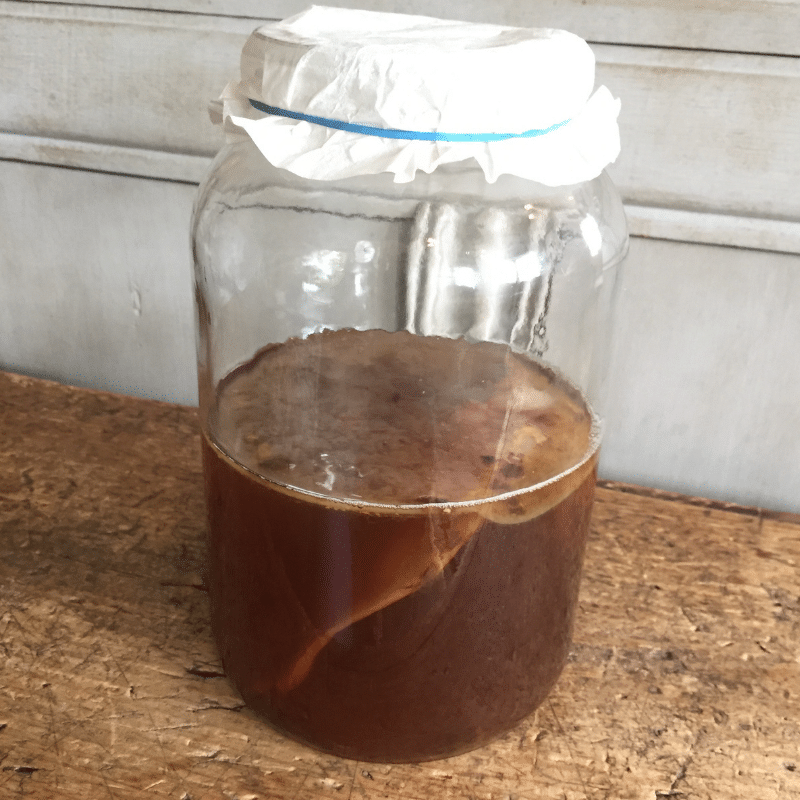
This post may contain affiliate links, which means I make a small commission at no extra cost to you.
See my full disclosure here.
I’ve received several questions lately about how to make kombucha, so it’s time for a tell-all post…
Good news: we’re in the process of negotiating an offer on our current house, which is fantastic because we just bought a farm and we only need one house.
My family is super excited to leave behind that joyous time of keeping the house immaculate for countless showings. Now we can go back to living like slobs. Just kidding! Sort of.
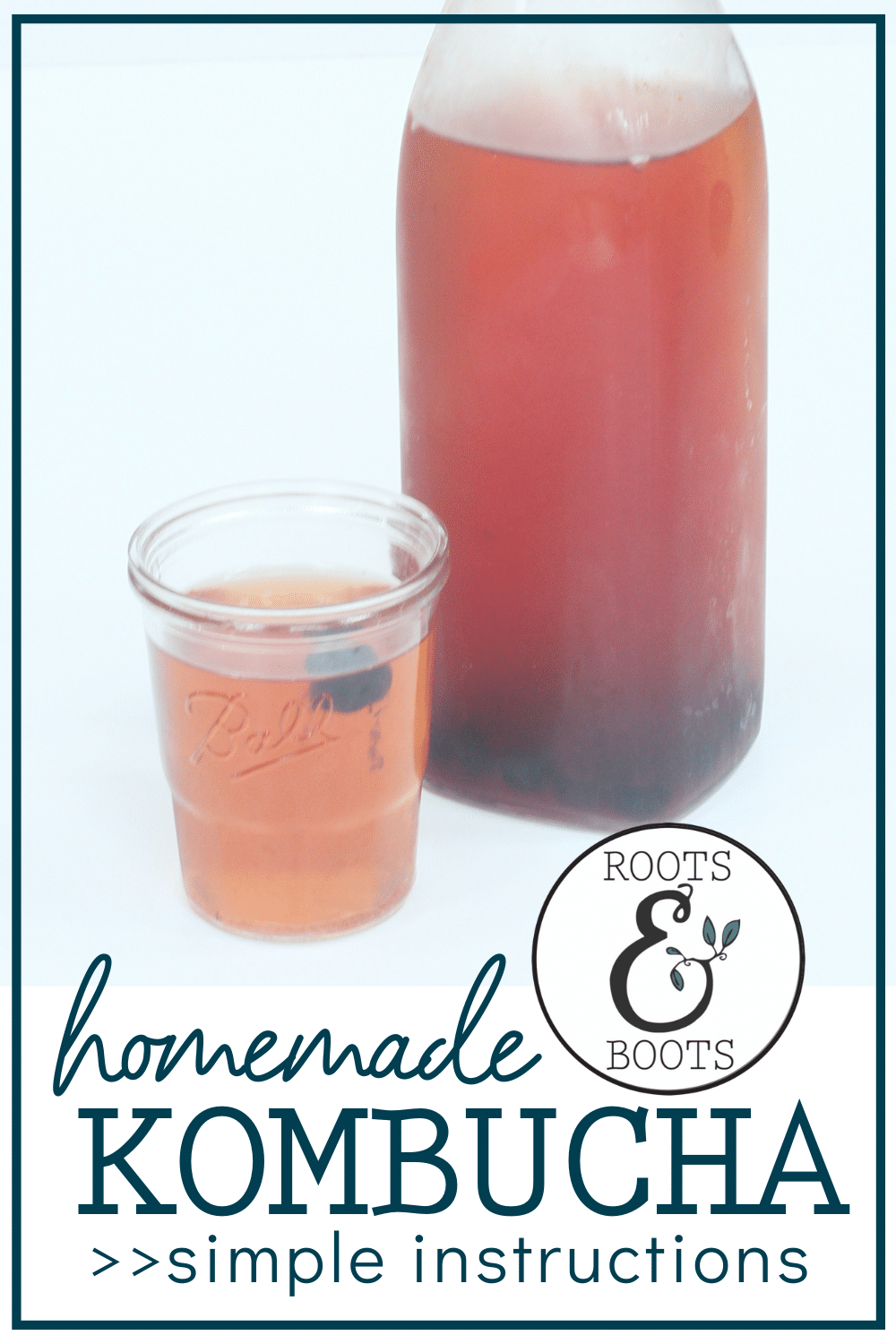
Is That An Alien? Monkey Brains?
But seriously, another great thing about no more showings is that I will no longer have to answer this question, asked while pointing to three gallon-sized jars atop the hutch just outside our kitchen: What is THAT!?
THAT would be kombucha.
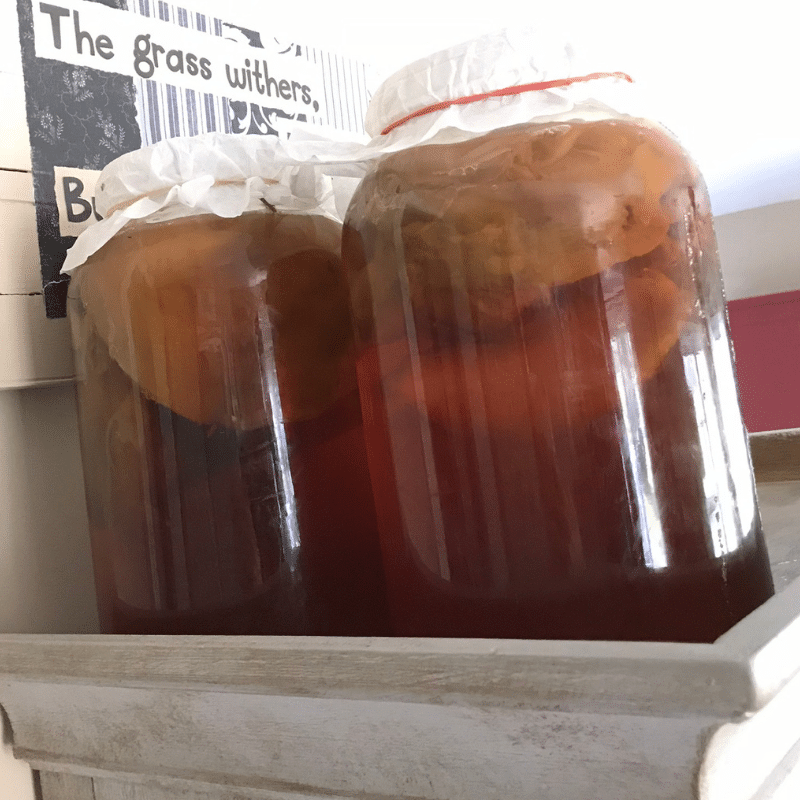
And yes, if you’re not familiar with it, kombucha (with kombucha SCOBYs) can look pretty strange and even sort of disgusting. But kombucha has become my family’s favorite healthy drink, and I couldn’t be happier because of all the good stuff I know we’re all getting from each glass of “booch”.
We don’t drink soda or juice, so (some of) my kids and my husband are pretty thrilled to have a soda-juice-like alternative. #momwin In all transparency, I should disclose that kombucha is approved by only two out of three Henderson children. We’re still working on Middle Bro…
What Exactly Is Kombucha?
Kombucha is a super healthy fermented drink made from tea (usually black), sugar, and a SCOBY.
Tea & Caffeine
>>>We started out with these organic black tea bags and eventually switched to my current favorite, a mix of green and black organic loose leaf tea.
It’s generally best to make from black tea, although certain green teas are a possibility. If you’re worried about the caffeine content (as I was), you’ll be happy to know that properly brewed kombucha contains just 1/3 the amount of caffeine of the tea used to make it.
Here’s the scoop from the experts over at Kombucha Kamp:
Kombucha is generally considered to have about ⅓ the amount of caffeine as the tea it is made with, so for example black tea, which might have 30-80mg of caffeine per cup may yield a glass of Kombucha with 10-25mg of caffeine. Green tea Kombucha might have just 2-3mg of caffeine.
For ways to decrease the caffeine content even more, check out the tips here.
You might also like to know that I’m very sensitive to caffeine. I don’t drink coffee at all for this reason. Have you tried this herbal coffee substitute? It’s my favorite! I drink it every day.
In fact, if I drink regular coffee any time after 12 noon, I will have trouble sleeping that night. Caffeine also really messes with my thyroid. However, I’ve been drinking kombucha made from black tea every day for about a year with no problems.
Want to see one of my typical breakfasts? Here it is: plantain breakfast cake with cooked blueberries, plus my coffee substitute and a delicious glass of homemade kombucha. Yum!
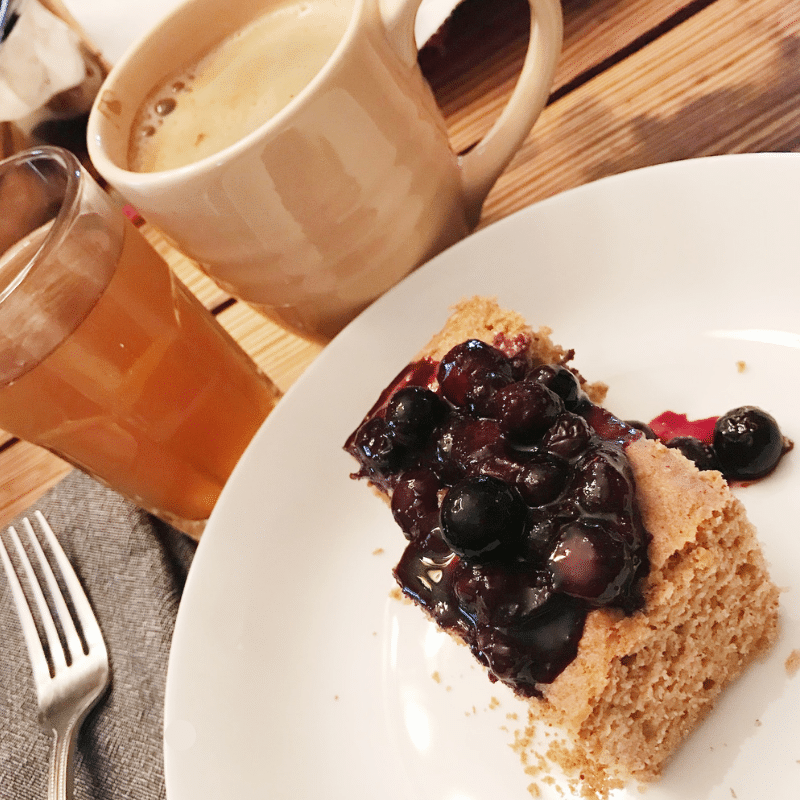
Sugar
>>>We use organic cane sugar, but you can use any kind of sugar and even brown sugar.
When my kombucha friends told me to add 1 cup sugar per gallon of tea, I just about fell out of my chair. We avoid sugar like the plague. The only thing it’s used for at my house is to make this awesome exfoliating sugar scrub.
So of course I did some reading, and was relieved to learn that (just like the caffeine), almost all of the sugar is consumed by the SCOBY during the the fermentation process. That’s the whole purpose of adding sugar: to “feed” the SCOBY.
Read more about the sugar in kombucha.
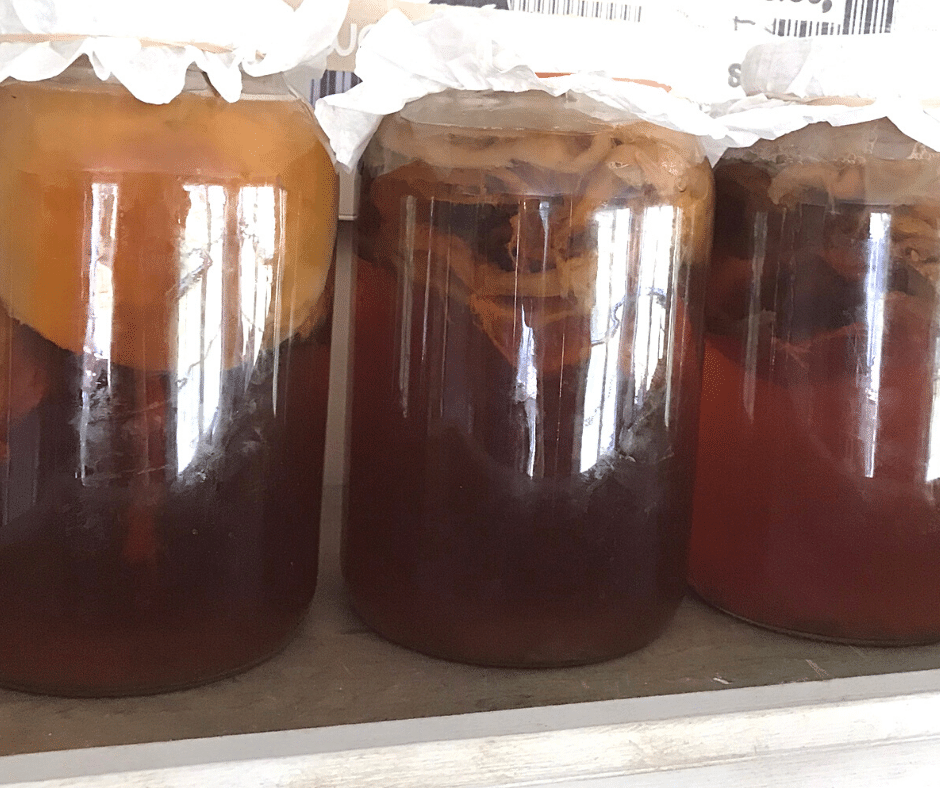
SCOBY
What in the world is a SCOBY, you ask?
SCOBY stands for symbiotic culture of bacteria and yeast. It’s a flat, jiggly, pancake-like thing that makes it possible to turn tea and sugar into delicious drink packed with healthy probiotics, antioxidants, B vitamins, and glucaric acid.
Yes, SCOBYs look weird. Gross, even. But you get used to it, I promise. Just be prepared to field questions from guests and potential home buyers…
Mature SCOBYs produce new SCOBYs on a regular basis. If you know someone who brews their own kombucha, they likely have a surplus population of SCOBYs and would be happy to give you one. Make sure to ask for a cup of starter liquid (previously brewed kombucha) too.
Otherwise, you can order a SCOBY from my favorite source of organic teas and kombucha supplies.
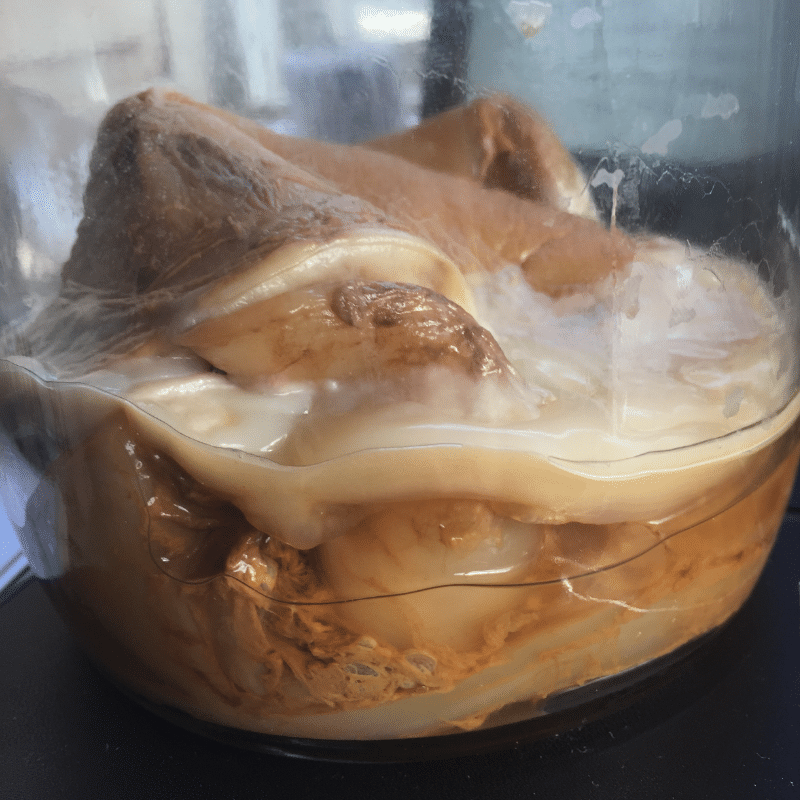
How to Make Kombucha
Update: we are now making continuous brew kombucha, a method which I highly recommend. Find those instructions here: How to Start Continuous Brew Kombucha.
You will need:
- tea bags or loose leaf tea
- sugar
- water
- 1 SCOBY
- large cooking pot(s)*
- large glass jar (gallon sized works well)
- coffee filter + rubber band or fermentation cover
- glass bottles with air tight lids**
- funnel (narrow, with strainer)
- wide mouth funnel
- flavorings (optional)
*We prefer stainless steel pots and have discovered that my jam pot works well for brewing large amounts of tea.
** You can technically use any glass jar with a lid. However, we’ve found that swing bottles with locking lids hold the fermentation best. When we stored kombucha in recycled honey jars, we found it went flat pretty quickly.
To make 1 gallon sweet tea:
- Boil 1 gallon water.
- Add 4-6 tea bags or 8-10 teaspoons loose leaf tea and steep for 15 minutes.
- Add 1 cup sugar and stir well to combine.
To make kombucha:
- Allow tea to reach room temperature. We actually cover the tea with a lid and leave the tea bags in overnight, then continue the process the next day.
- Please note that all jars, bottles, and other tools should be clean and dry.
- When the tea has cooled to room temperature, pour into glass jar, leaving several inches headroom. A wide mouth funnel can be helpful for this step.
- Add 1 cup starter liquid and 1 SCOBY. The SCOBY will eventually float to the top, sealing off the kombucha from the air at the top of the jar.
- Cover the jar with a paper coffee filter and secure tightly with a rubber band. Or use a fermentation cover.
- Place jar out of the way in a warm spot, about 70-80 degrees Fahrenheit. If you ferment other foods, keep each type of food at least a few feet from other fermenting foods.
- Leave the kombucha alone for 7-10 days. It all depends on the temperature and batch size. Our kombucha is finished in 7 days.
- When the kombucha is ready, you can begin a second ferment (see below) or simply pour the kombucha into bottles with airtight lids. We use a narrow funnel with a strainer for this step, in order to catch the strings of yeast. It’s safe to drink them, so it’s really more of a preference.
- Either way, this is the time to add flavorings if desired. See below.
Kombucha flavoring
We like to keep our kombucha flavorings simple, mainly because my son is the one overseeing the entire process. The simplest and tastiest ways we’ve found to flavor kombucha include essential oils and frozen fruit.
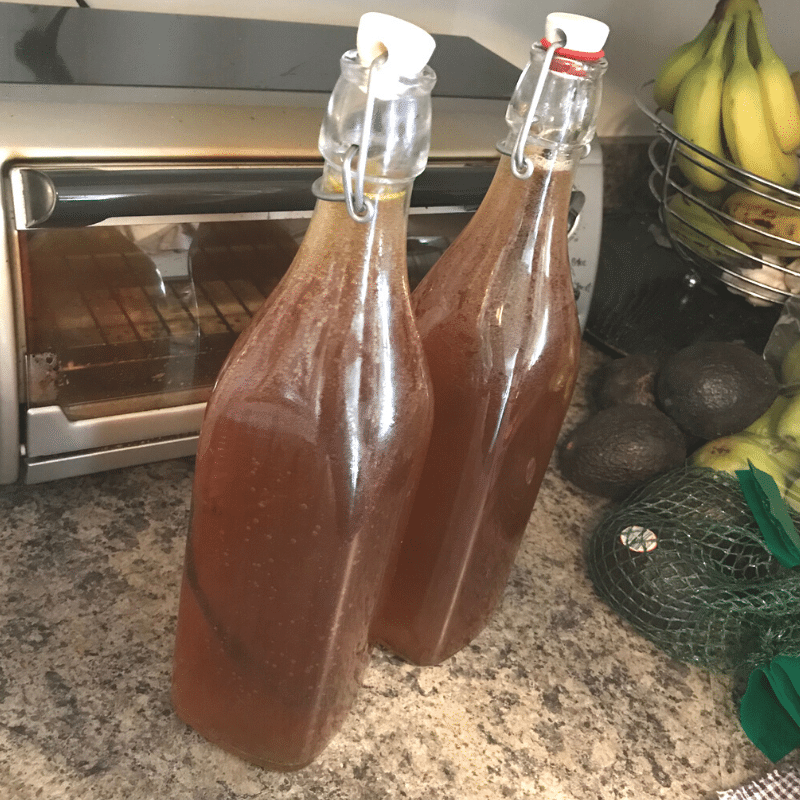
We store our bottled kombucha in the fridge because we like to drink it cold. Chilling it also slows down the fermentation process, which would continue to occur if left at room temperature.
We haven’t tackled a genuine second ferment yet, for two reasons:
- A second ferment can result in exploding jars of if the process isn’t properly managed. My 11yo son is the kombucha master at our house and I haven’t trusted him with this process yet.
- A second ferment produces a fizzier kombucha and my kids don’t like fizzy drinks.
What is a second ferment?
A second fermentation is exactly what it sounds like: you ferment your batch of kombucha a second time. This produces a fizzier end result, and can also help to achieve a deeper flavor if you choose to add flavoring ingredients like fruit, juice, ginger, etc.
To do a second ferment, simply bottle up your kombucha with very little headroom at the top of the bottle. Add flavorings if desired, and make sure the bottles are tightly capped. Store this kombucha at room temperature away from sunlight for about two days and even up to a week.
Here’s the very important part: “burp” the bottles every so often to avoid building up too much pressure which will explode the bottle. Some folks even wrap their 2nd ferment inside a trash bag just in case there’s an explosion.
Not quite ready to tackle a second ferment? Using a bottle with a locking lid and leaving the kombucha at room temperature for a few hours allows you to achieve a bit more fizziness without the complication of a second ferment.
Have you tried kombucha?
More kombucha resources:
- How to Get Started with Kombucha
- How to Start Continuous Brew Kombucha
- Flavoring Kombucha with Frozen Fruit
- How to Flavor Kombucha with Essential Oils
22 NOURISHING GLUTEN-FREE SOUP RECIPES
Simplify your dinner prep with these tasty, nourishing soups!
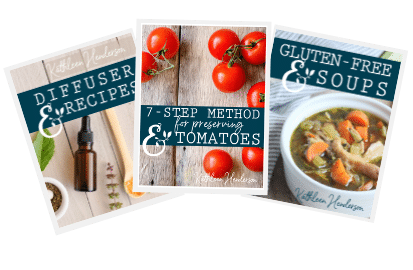
Sign up NOW for my best tips delivered weekly to your inbox!
You’ll also get instant access to my library of free ebooks and resources.
You might also like...
4 responses to “How to Make Kombucha”
-
Kathleen, I used to shy from this drink until someone mentioned the benefits that would help me digestion. I was leery but jumped right in. Its a bit expensive, so I was excited to see your great step by step to making it. I don’t know anyone, new town, so I will start from scratch. I want to attempt to make this, since you made it look so easy. thank you
On a different note: I am venturing to start a blog. Any advice you have for a novice? there are a lot of people selling their system. I’m in the process of homework, gathering my resources, steps and game plan. My hope is to keep is simple, help people ( no niche, kinda broad topic), learn how to make some money too.
thank you again for such a great, informative and down to earth approach.
-
Hi Darlene, So sorry I missed your comment! I hope your homemade kombucha endeavors are going well! As for blogging advice, one of my very favorite bloggers is Crystal Paine at MoneySavingMom.com. She also has a separate blog called yourbloggingmentor.com. I recommend all of Crystal’s resources!
-
-
Just a tip…. IKEAs bottles are the best. No more bursting!
-
Ooooh, good to know!
-
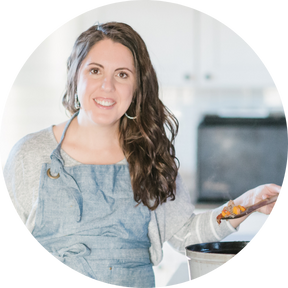


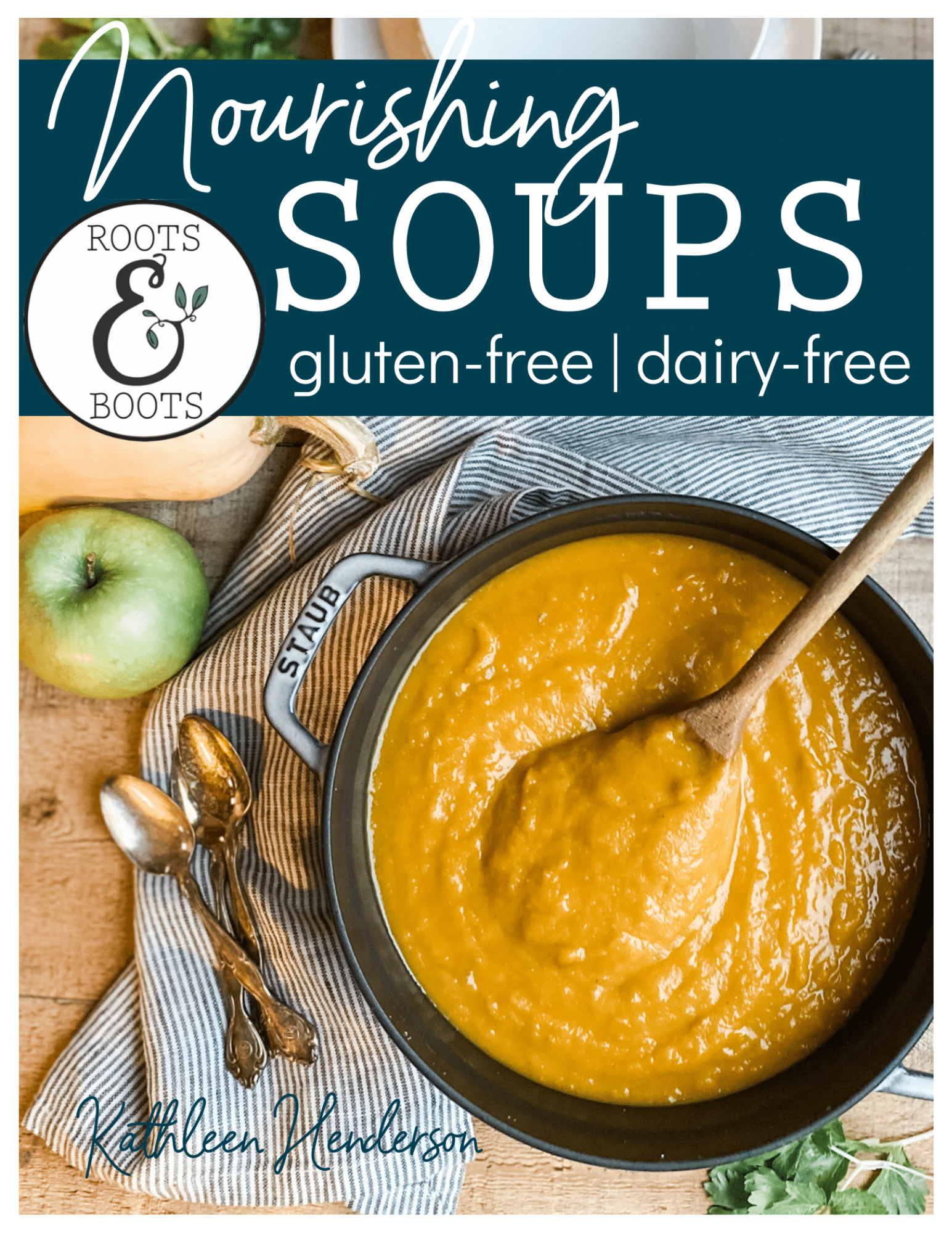

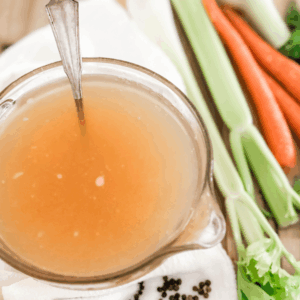
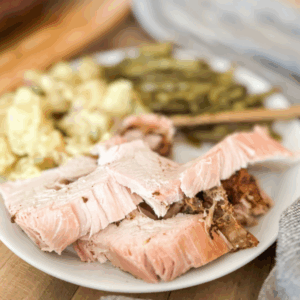
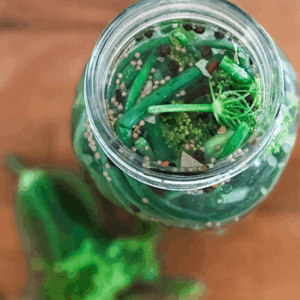
Leave a Comment